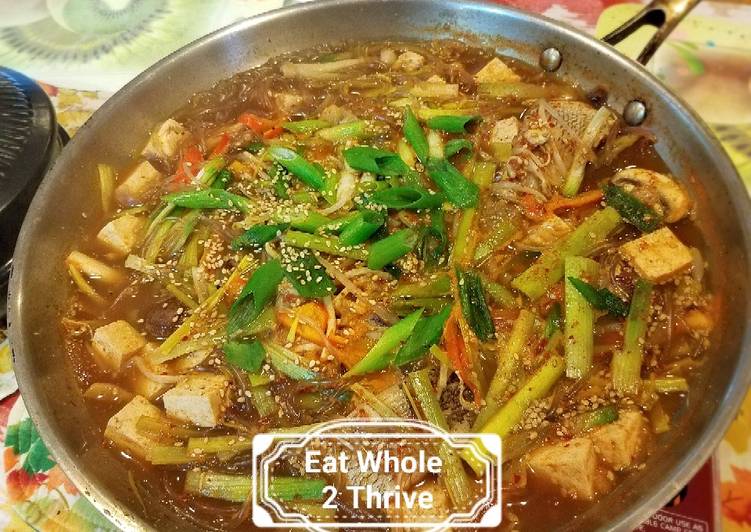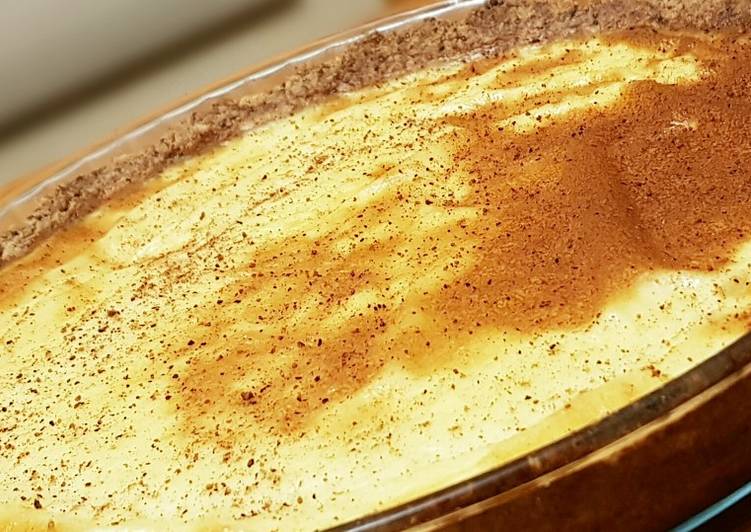
Hello everybody, hope you are having an amazing day today. Today, I’m gonna show you how to prepare a distinctive dish, spicy korean fish stew. One of my favorites. This time, I will make it a bit unique. This will be really delicious.
The two components to the stew are broth and seasoning paste. The classic Korean fish stew is traditionally known as maeun-tang, which means "spicy" and "soup" or "stew" in the Korean language. The stew is a little bit spicy, a little sweet, and has dozens of variations.
Spicy Korean fish stew is one of the most favored of recent trending meals on earth. It is enjoyed by millions daily. It is simple, it is quick, it tastes yummy. They’re fine and they look fantastic. Spicy Korean fish stew is something which I have loved my whole life.
To get started with this recipe, we must first prepare a few ingredients. You can have spicy korean fish stew using 15 ingredients and 3 steps. Here is how you cook it.
The ingredients needed to make Spicy Korean fish stew:
- Take 1 lb whole fish(e.g. progie, bass, snapper, Flounder and etc)
- Get 2 cup mung sprouts
- Take 1/2 pack firm tofu
- Get 1 bundle mung glass noodle
- Take 1 medium onion
- Prepare 1 cup leek
- Make ready 2 green onions
- Take 2 Tsp korean hot pepper flakes
- Get 2 Tsp soy sauce
- Prepare 2 Tsp honey or brown rice syrup or sugar
- Take 1 Tsp gochujang
- Prepare 1 Tsp garlic paste
- Get 1 tsp ginger paste
- Take 1 Tsp white toasted sesame seeds
- Get 1 Tsp rice flour + 1/4 cup water to make starchy water
For this recipe, I made it with a red snapper (domi, 도미), which has a firm, white flesh with a mildly sweet and nutty flavor. Spicy Pollock Roe Stew (Al Tang or Al Jjigae) is a wonderful hearty spicy fish egg stew that is bursting with flavors of the sea while having that unique mix of Korean flavors that are hard to tell what's in it but it just tastes really really good. Spicy Korean Seafood and Vegetable Stew I'm on vacation this week (you can follow our travels in pictures on instagram ), and I've asked a number of up-and-coming natural foods bloggers to take my place and keep you completely sated with all sorts of mouthwatering recipes. The white flesh underneath the red spicy sauce is tender and moist, and the crunchy bean sprouts nicely complement the white fish with a burst of spicy flavor!
Steps to make Spicy Korean fish stew:
- Flaky fish such as flounder, porgie, bass, red snapper (yellow tails) or mullet are great good choice for this recipe. Fresh mackerel is also very good but salmon or tuna are not good here. Boil the cleaned fish covered by water for 5 minutes.
- While the fish is boiling, make the paste by mixing hot pepper flakes with soy sauce, garlic ginger paste, gochujang, honey and starchy water. Set aside.
- Discard half of the cooking water (fish stock can be used for other dishes). Add the bean sprouts, cubed firm tofu, sliced onion and mung bean glass noodle. Stir in half amount of the sauce. Bring it to a boil and reduce to simmer and cook for 10~ 15 minutes. Make sure the simmering the liquid is not too much or too little (soak up by the glass noodle). Adjust seasoning with the remainder paste. Top with green onion and toasted sesame seeds. Serve with bread or rice.
Jjim (찜) in Korean cooking refers to the dishes that are steamed or braised. Spicy Alaska Pollock Stew (Dongtae Jjigae) Alaska Pollock Stew or Dongtae Jjigae is a very popular Korean fish stew that is made with frozen Alaska pollock. I have shared in my Bugeo Gui recipe about how Koreans use different words to describe Alaska pollock in different states - fresh, frozen, dried, semi-dried. Korean Stuffed Chicken Soup With Ginseng (Sam Gae Tang) Recipe. Taste for seasoning, adding more salt if necessary and sprinkle with minced scallion greens.
So that is going to wrap it up for this special food spicy korean fish stew recipe. Thank you very much for reading. I’m sure that you can make this at home. There is gonna be more interesting food at home recipes coming up. Remember to bookmark this page in your browser, and share it to your family, colleague and friends. Thank you for reading. Go on get cooking!


